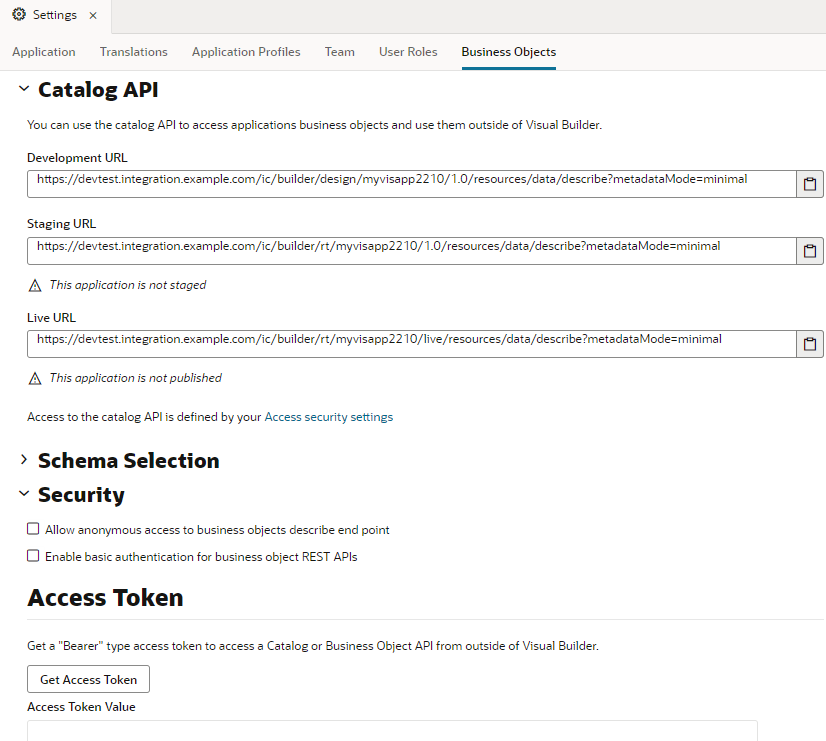The vertical toolbar is the navigator. It has following parts:
Web applications
Services
Business Objects
Layouts
Components
Processes
Source
Web applications:
We can create multiple web apps within our visual application. Each web app is independent, but they can all use the data sources defined in the visual application.
Services:
With the help of service connections, connect to REST APIS, to any back end systems like database ORDS system, fusion applications etc which has exposed as a rest. If we need to connect a soap connection. Then better to use oic integration to connect soap service, then from vbcs servics, we can the rest integration service as servicr catalog.
Business Objects:
- A business object is just a resource for example, en employee or address. It has fields to hold the data for your application. A business object is like database table. In fact, business objects are stored in a database.
- The web application accessess the business objects through their rest endpoints.
Layouts & Components:
It has all the available oracle JET tools , we can install them and use in our web pages such as about page, calender, attachments viewer, data grid , dynamic table etc.
Processes:
using this section, we can connect to PCS service like any human intervention workflow.
Source:
It stores all the sources of the components we drag and drop in the web app pages. As VBCS is a low code developement environment, it stores all the sources here with visual-application.json, package.json, gruntfile.json etc. Files.















